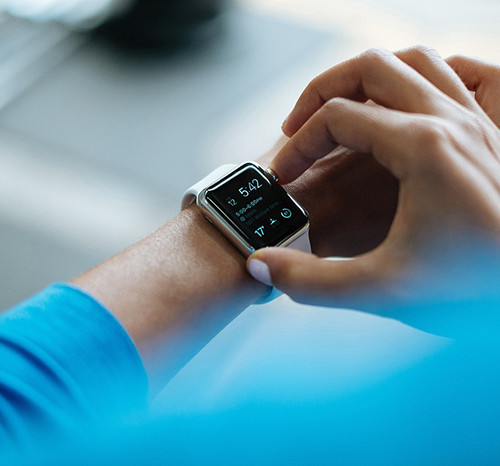Each year, digital marketers are presented with the next big thing. Choosing whether to jump onto that current band wagon or pass it off as a fad means either being a digital pioneer, a disappointed optimist, or left behind and catching up later. Smartwatches are just one of those current trends. And while the adoption of new tech is much swifter these days, the danger that they are just this year’s must-have and nothing more can lead to a huge investment into something that fails to prove its worth, even in the long term.
In a recent survey on the Smartwatch Phenomenon, Kentico Software carried out extensive research of 1,000 Internet users aged 18 years and over, across three continents, to discover what the uptake, interest level, and respondents’ opinions of smartwatches are.
The survey revealed that, in the US, consumer interest in smartwatches is high, (nearly 60% would like to eventually own one – 36% within the next year). However, the figures for Europe and the UK are more conservative (under one third of Brits want to own one – 22% in the next year). This could be influenced by the fact that half as many Europeans as Americans know friends or colleagues with a smartwatch (22% in Europe, 44% in US). Peer pressure can have a lot of bearing on purchasing decisions when it comes to gadgets. The desire to be “in” can cause people to buy into a smart tech item based on want rather than need just so that they are not left behind.
When it comes to reasons for resistance, however, 75% of people in the US and 60% of Europeans blame cost as being the main obstacle to their adoption of smartwatches. The next biggest purchase barrier is the lack of a compelling reason to buy – one third of respondents in the US and 44% in Europe say this. This could be because smartwatch functionality is a rapidly developing sphere and is, as yet, still in its infancy – much like smartphones were in the ‘noughties’. As apps become more widespread and clever in the way they utilise the limited screen display, so will the understanding of their practical purpose and the uptake.
And speaking of their actual usage, 46% of Europeans cited the ability to email and text without having to pull out their phone as the most intriguing, while 37% favoured using them to get directions. The next most popular features are voice and video calling (32%), then safety monitoring (27%), real-time alerts such as those from an airline, bank or social network (24%) and finally tracking diet and exercise (21%).
Why Should Digital Marketers Care?
In terms of how smartwatches can be used as a digital marketing medium, the fact that the smartwatch is worn as an item of clothing means it is more integrated into the identity of the wearer – much in the same way a fashion accessory would be. Smartwatches can be perceived by the user as an extension to themselves – as a timepiece, the watch is already an item that they are used to referring to in terms of accessing information. This fundamental factor makes it a more immediate channel for receiving information than retrieving a mobile phone from a pocket or the bottom of a bag.
As another channel of engagement, it is necessary to consider the factor for delivering this content effectively. As the Kentico Digital Survey explains, “content must be retrieved from content management systems in the most efficient way using raw format with no additional markup other than the information that is being communicated to the user. Content management systems that are being used to support content delivery to wearables and IoT tech must provide developers with atomic, robust, and scalable API with tools that can be used to build platform-specific applications as part of an API First strategy. This involves defining the channels one’s API resources are made available on before beginning work on a website or application, making creating smartwatch and other wearable apps relatively easy when done with write-once, run everywhere development platforms.”
Smartwatch Content Will Soon Be King
Having this extra channel to deliver offers and messages based on the location of the wearer is a powerful tool for digital marketers. Trips to shopping centres where content producers can engage with smartwatch owners, enticing them to visit their store at the precise moment that shopper passes their shop front seems the ultimate in personalisation. But the question remains, at what point does this engagement become perceived as intrusion and spamming? The survey revealed that Brits feel strongly about privacy: the majority of British, 52%, would prefer to totally block ads (against 29% in US). And there lies the problem. How do you outsmart the smartwatch wearer?
As was stated at the start of this article, the cunning marketer is the one that keeps their eye on new technologies. And with the sales of smartwatches on the up – an estimated 30 million units sold in 2015, it would appear that they are here to stay. How their functionality and lifestyle adoption finally resolved themselves is anyone’s guess. As with all new trends in gadgets that we weren’t aware we were missing, the user usually defines the market.






